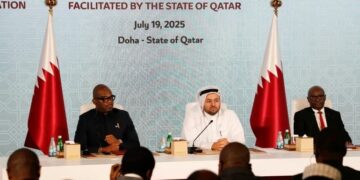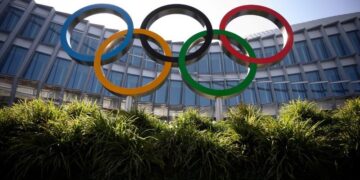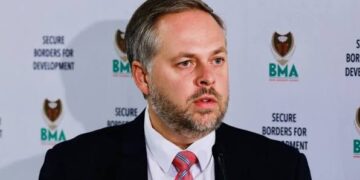The Democratic Republic of the Congo and the March 23 Movement rebel group have signed a framework agreement in Doha, Qatar, marking what observers describe as a measured but critical development in efforts to address the prolonged conflict that continues to destabilise eastern DRC.
The agreement, announced by Qatar’s Ministry of Foreign Affairs, builds on the Declaration of Principles signed by both parties in July. According to Doha’s statement, the new framework reaffirms a shared commitment to resolving the conflict through a structured, phased process rooted in dialogue, confidence-building and practical mechanisms for de-escalation. It is designed to act as the cornerstone of a broader peace strategy, with planned protocols to include measures for ceasefire verification, humanitarian access, troop withdrawal, and reintegration efforts.
The DRC government has described the signing of the Doha Framework as a decisive moment. A statement from Kinshasa underscored that “no status quo is compatible with the objective of peace” and called for the immediate improvement of conditions for communities that continue to bear the brunt of armed violence and displacement. Congolese authorities noted that they are committed to an inclusive peace process that reflects the complexity and diversity of actors involved, as well as the suffering of civilian populations.
While the agreement is being cautiously welcomed, M23’s lead negotiator in Doha, Benjamin Mbonimpa, publicly noted that the document is non-binding in its current form. He stated that no changes on the ground should be expected until specific protocols are negotiated, debated and ratified through subsequent phases. His remarks echo a broader sentiment among analysts that the road to sustainable peace remains uncertain and highly contingent on the credibility of implementation frameworks.
This recent development follows an earlier roadmap set out in July when both parties committed to a negotiation start date by early August and aimed for a comprehensive peace deal by mid-August. However, those milestones passed without tangible movement, raising scepticism over timelines and political will.
Since its resurgence in late 2021, M23, now integrated within the broader political military platform known as the Alliance Fleuve Congo, has expanded its territorial control across parts of North and South Kivu. Strategic towns such as Goma and Bukavu have experienced parallel administrative governance under the rebel group, further complicating the DRC’s efforts to reassert state authority and exacerbating an already volatile humanitarian situation.
According to United Nations, more than 2.4 million individuals have been displaced since January 2025 alone, contributing to a total of nearly 6 million internally displaced people. In addition, approximately 1 million Congolese have sought refuge in neighbouring states, while an estimated 27 million face acute food insecurity. The combination of armed conflict, weak institutions and limited humanitarian access has contributed to one of the continent’s most pressing crises.
The Doha framework is viewed by regional observers as a potentially constructive instrument, yet it must contend with the legacy of stalled accords and broken ceasefires that have long defined the eastern Congo theatre. The involvement of Qatar reflects a growing pattern of Gulf state engagement in African conflict mediation, expanding the diplomatic architecture beyond traditional actors. However, meaningful transformation will ultimately hinge on the willingness of all stakeholders to prioritise the needs of affected populations above entrenched political and military interests.
Within the broader Great Lakes Region, this framework is being watched closely by neighbouring governments and regional bodies who see the DRC conflict as intrinsically linked to cross-border dynamics involving economic interests, refugee flows, and regional security. The African Union and sub regional organisations such as the East African Community continue to advocate for a multilateral approach that ensures that peace is not only negotiated at elite levels but also inclusive of community perspectives and local leadership.
While the framework agreement does not offer immediate guarantees, its potential lies in whether it can transition from a symbolic gesture into a practical pathway toward lasting stability. The challenge now is not only to prevent further deterioration but to create a sustainable architecture for peace that recognises the full historical and human complexity of conflict in eastern Congo.















